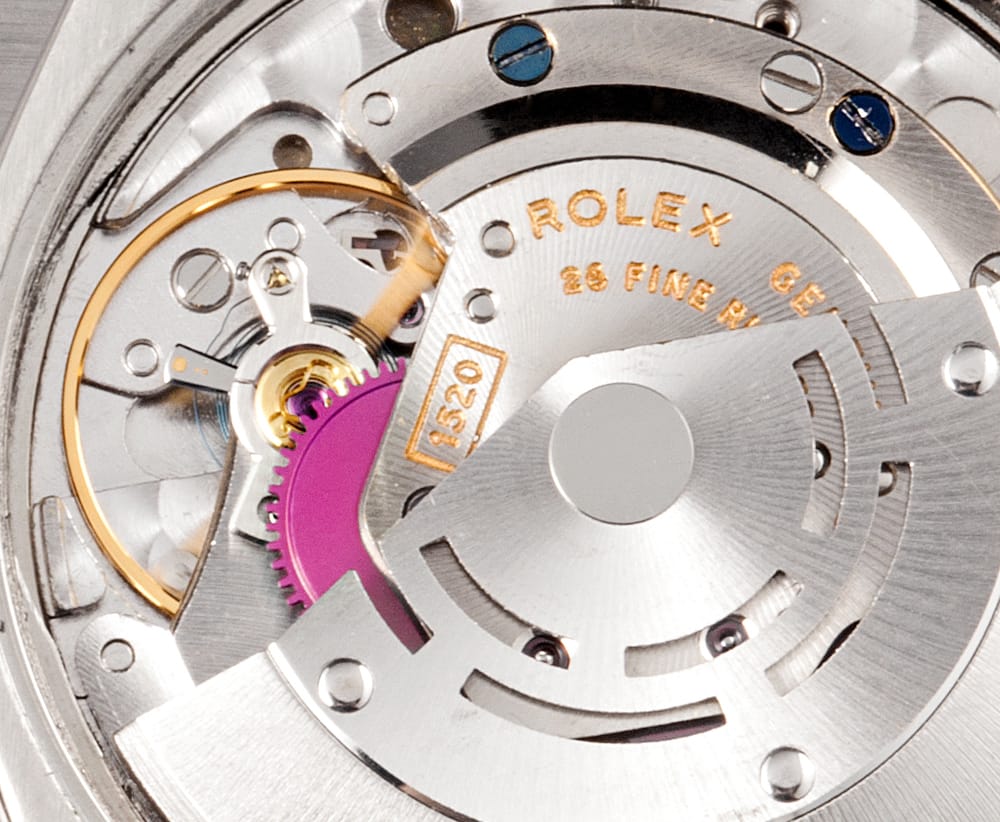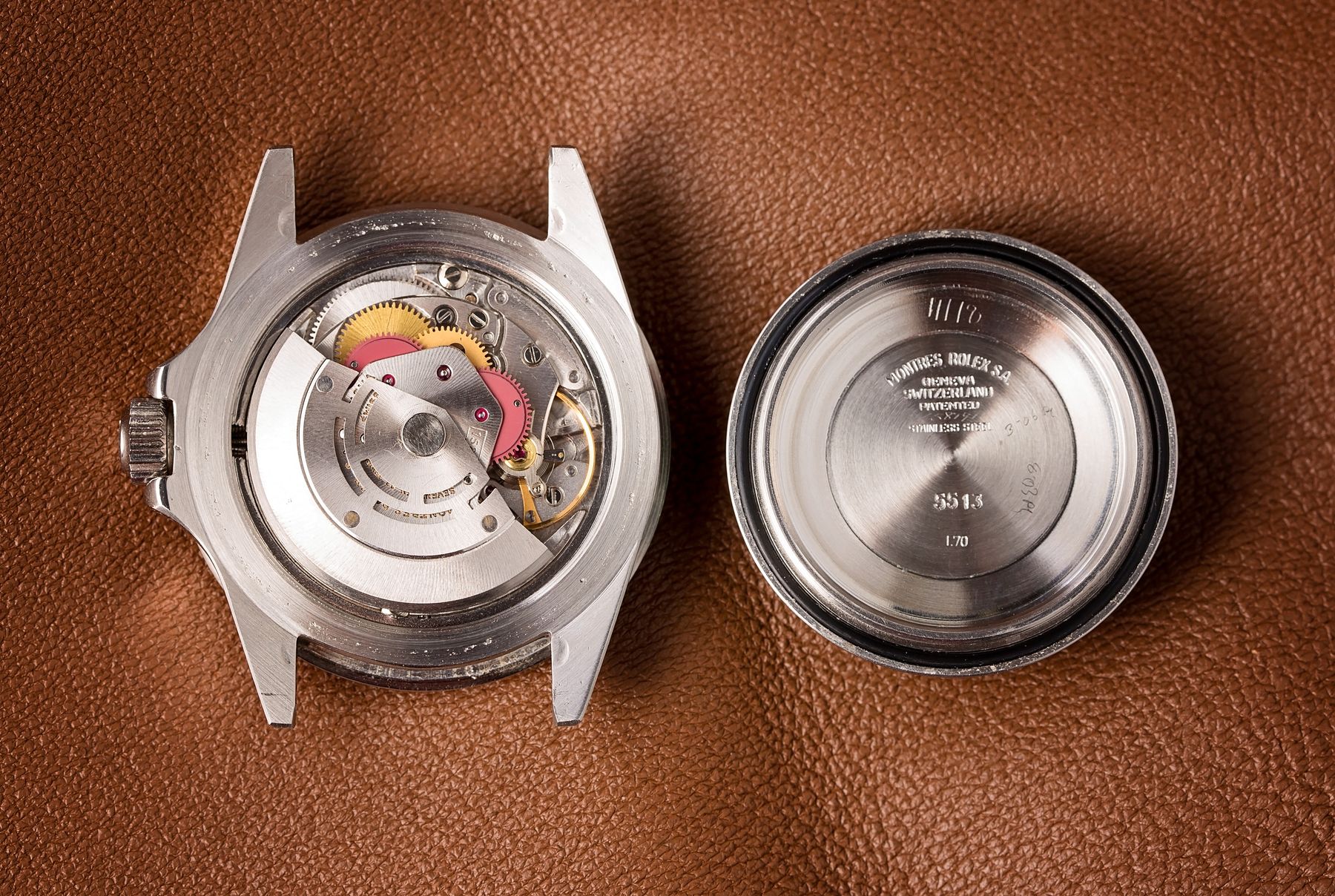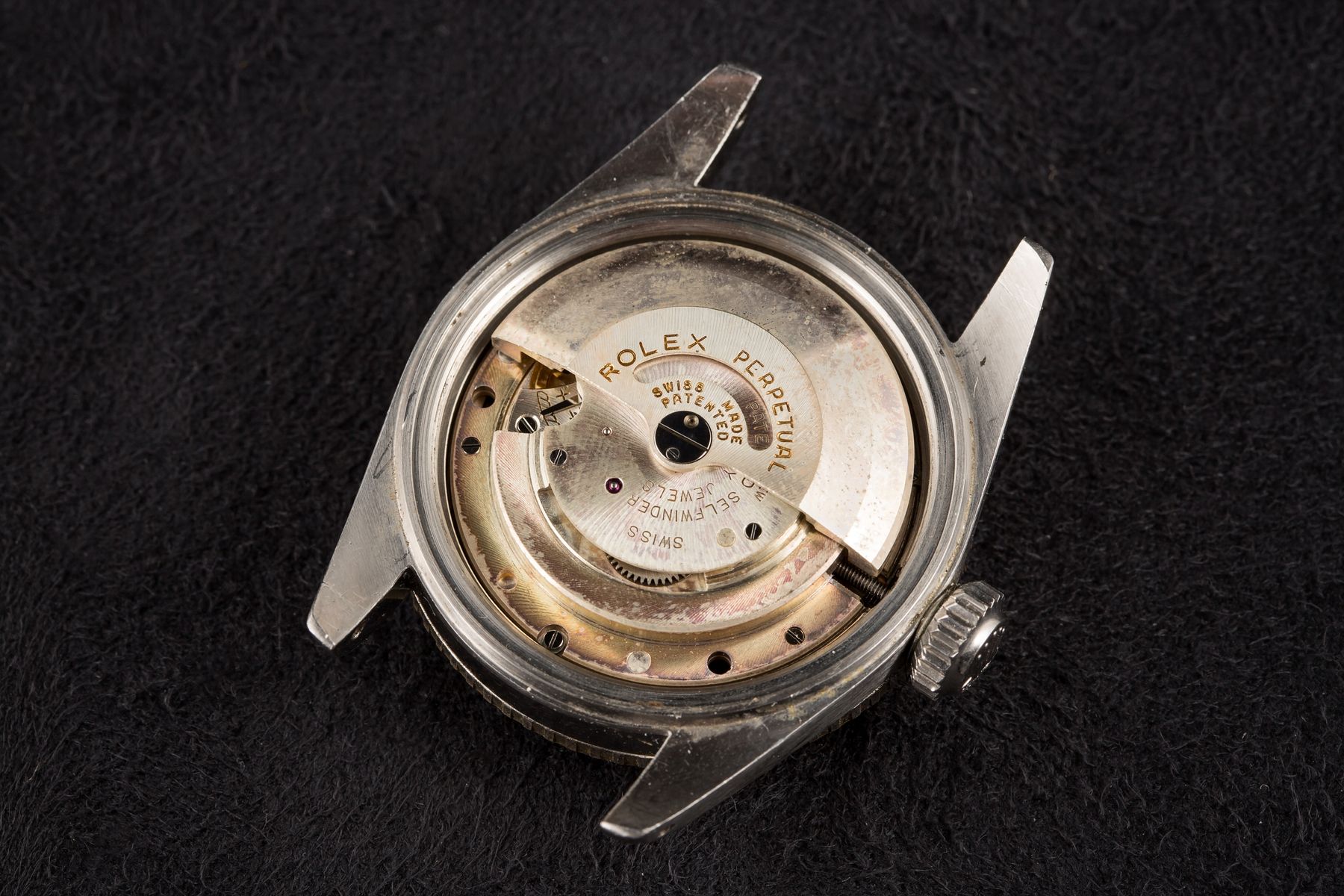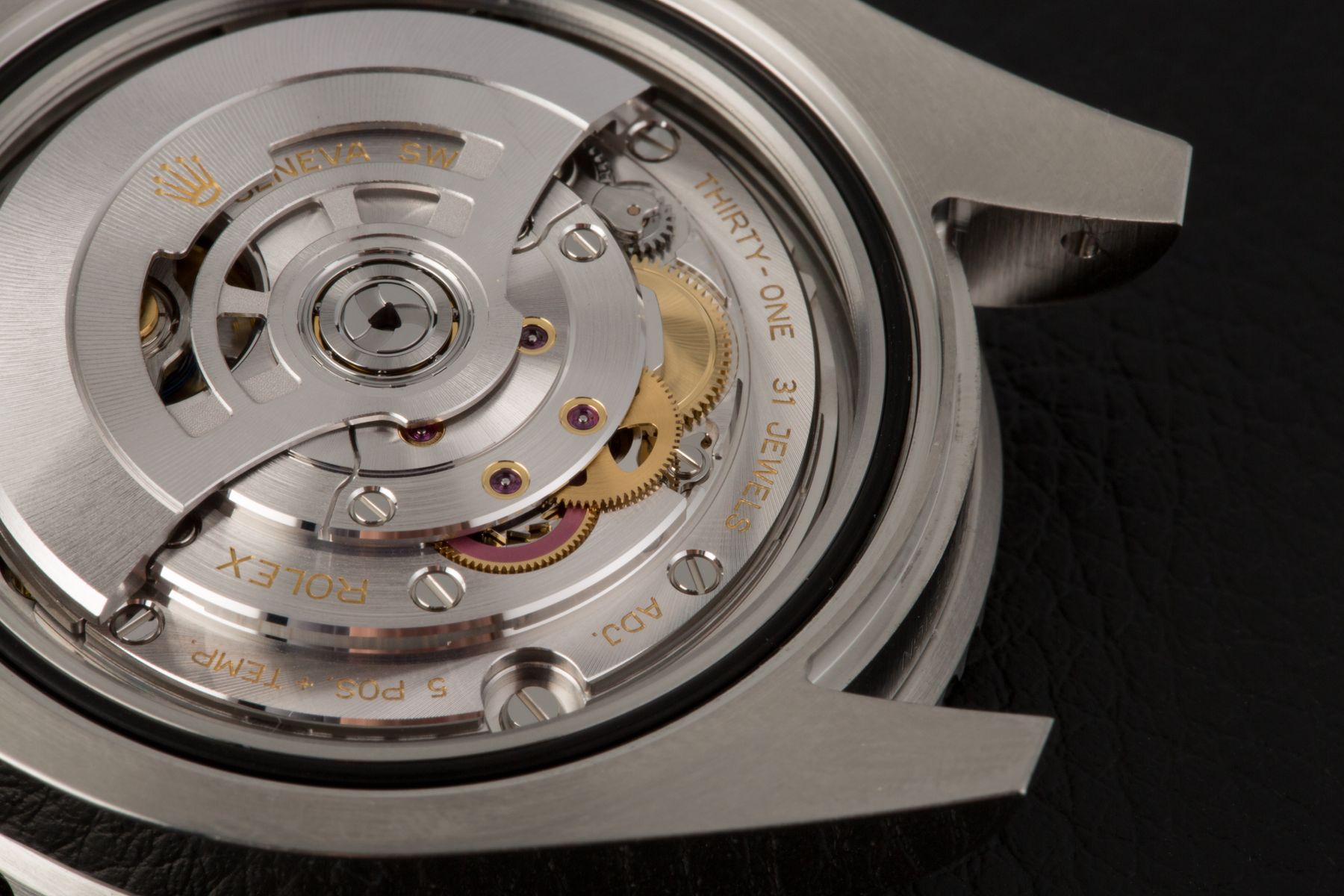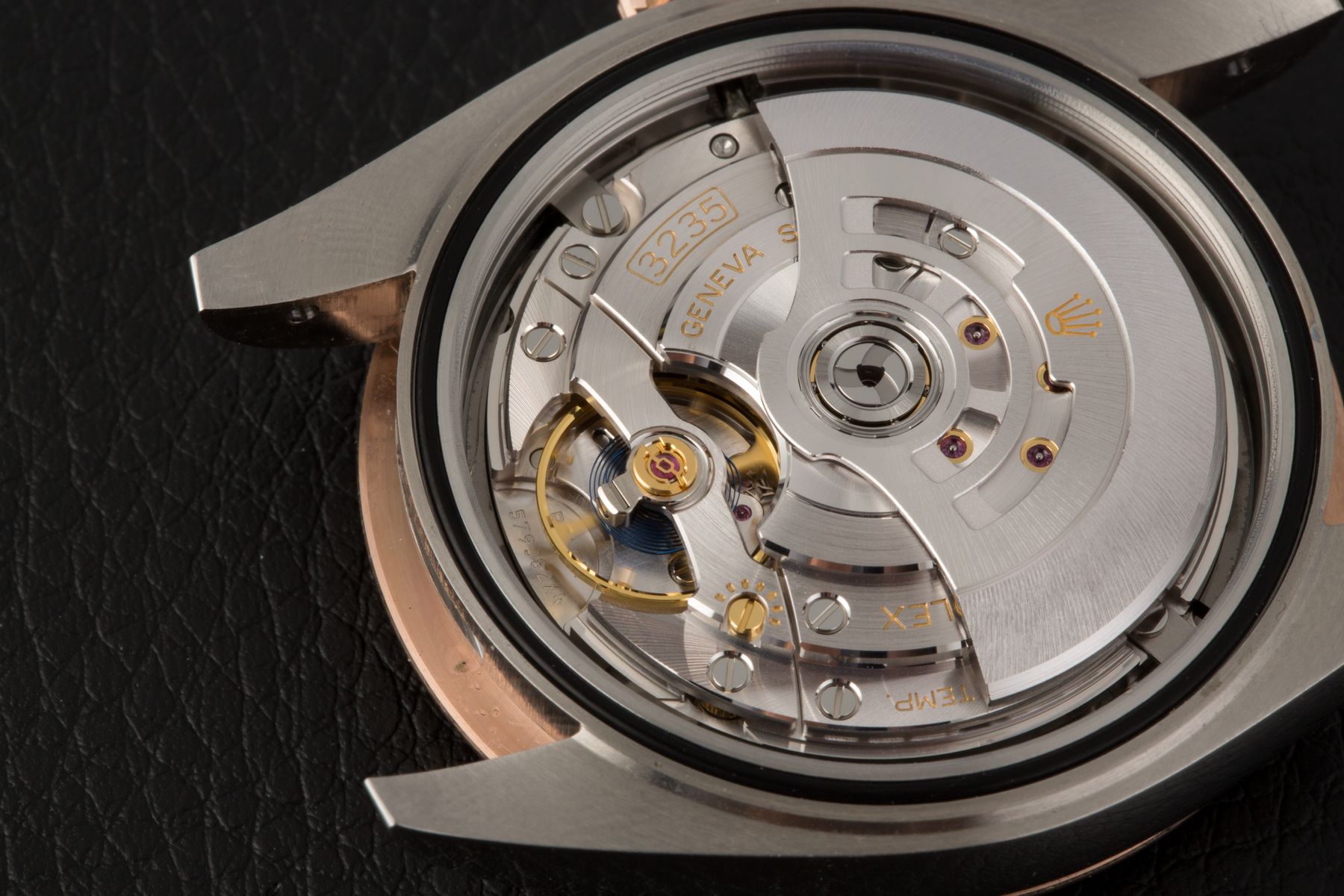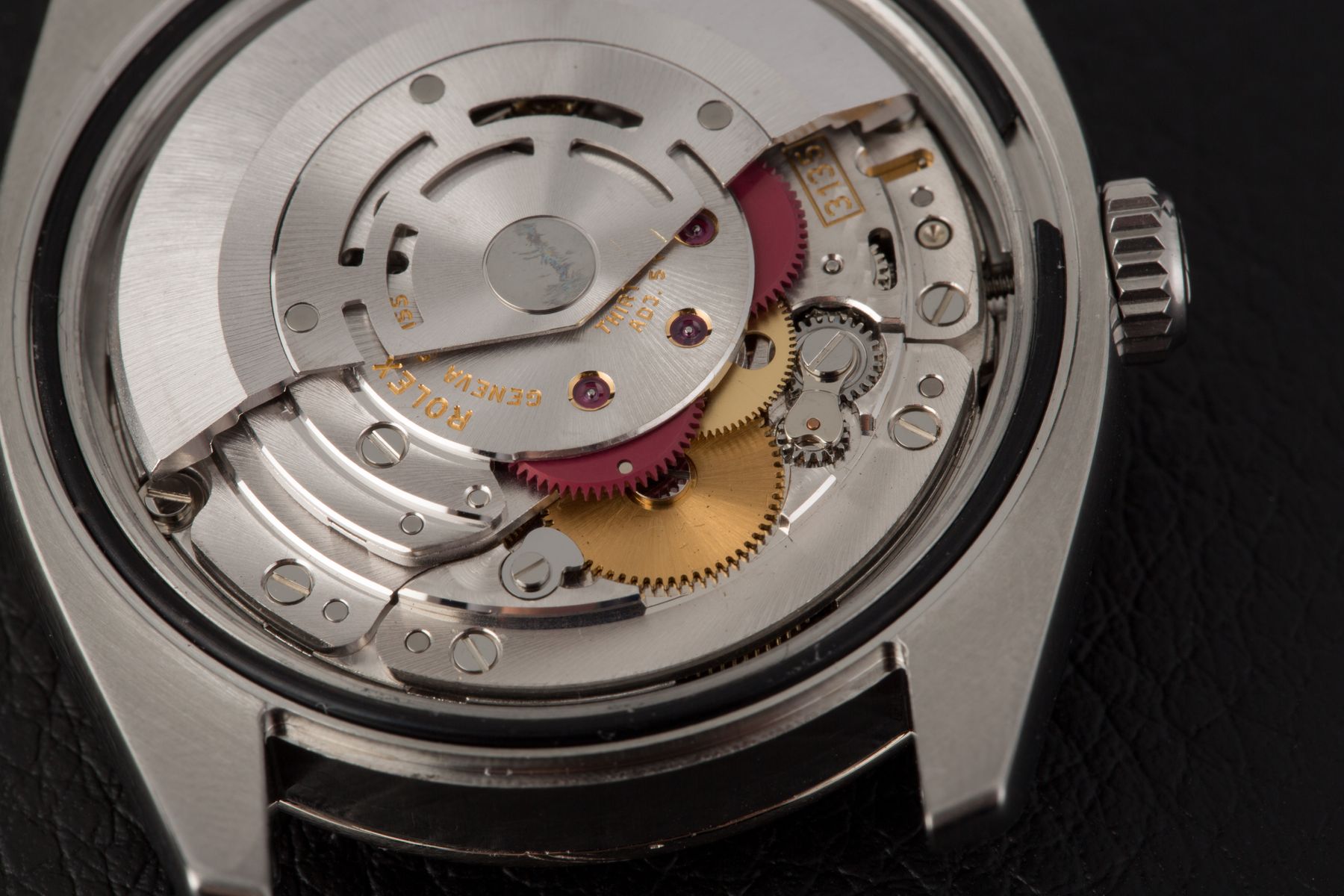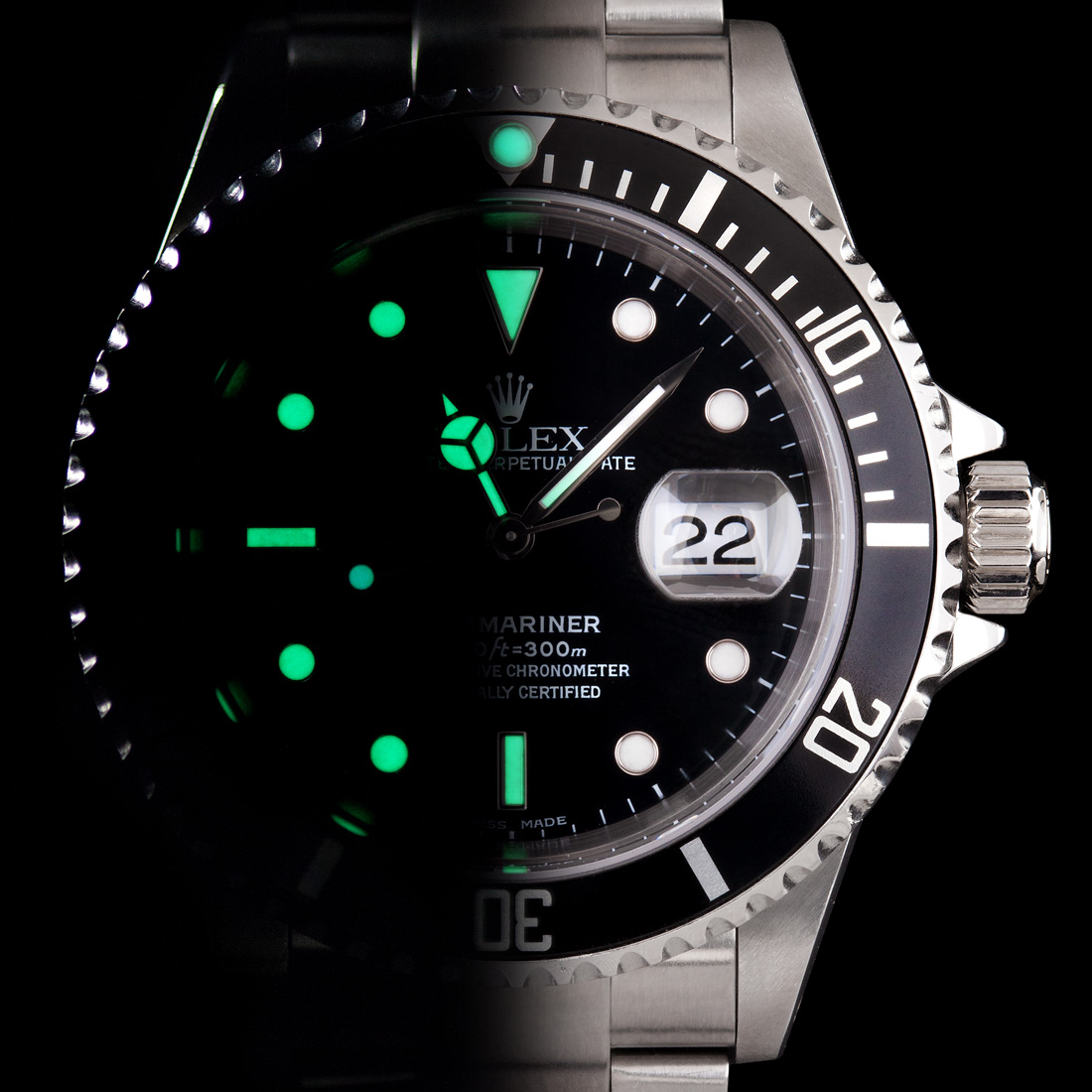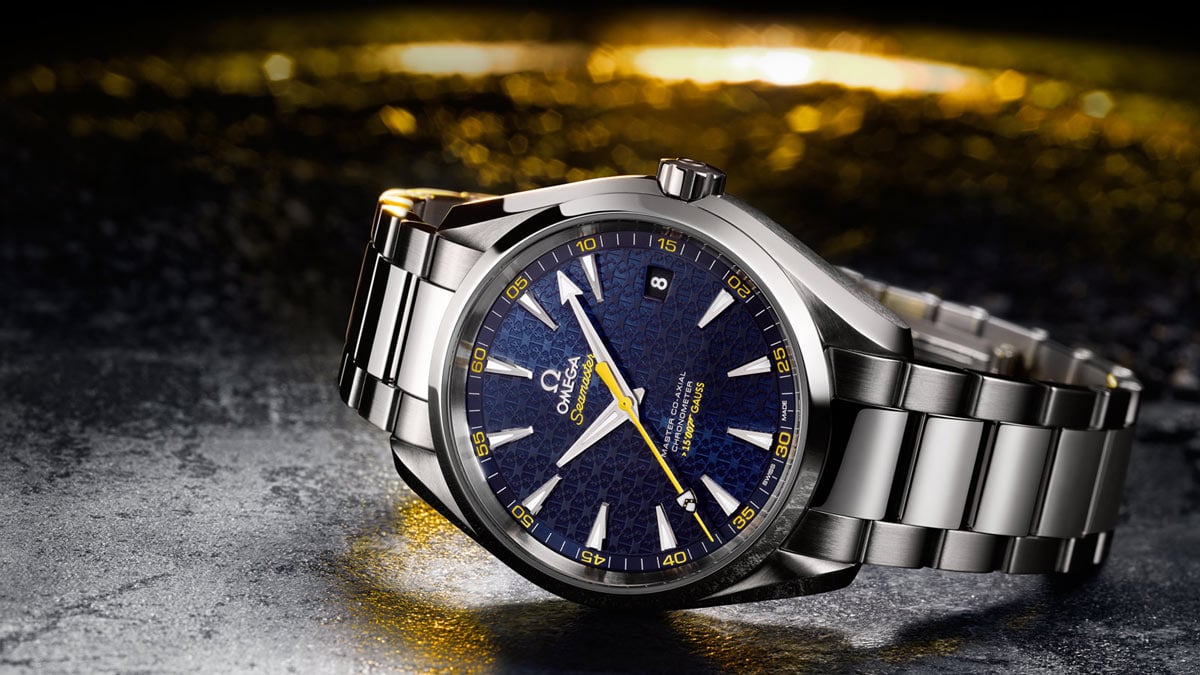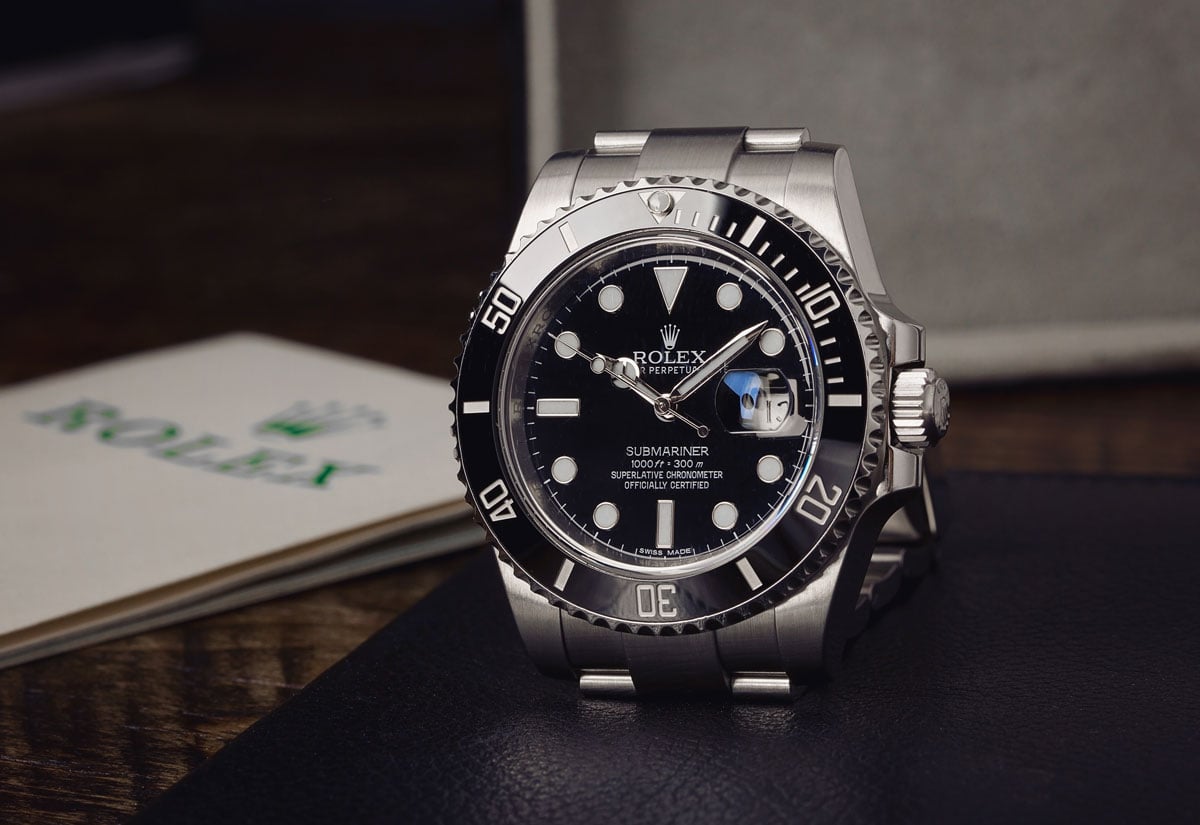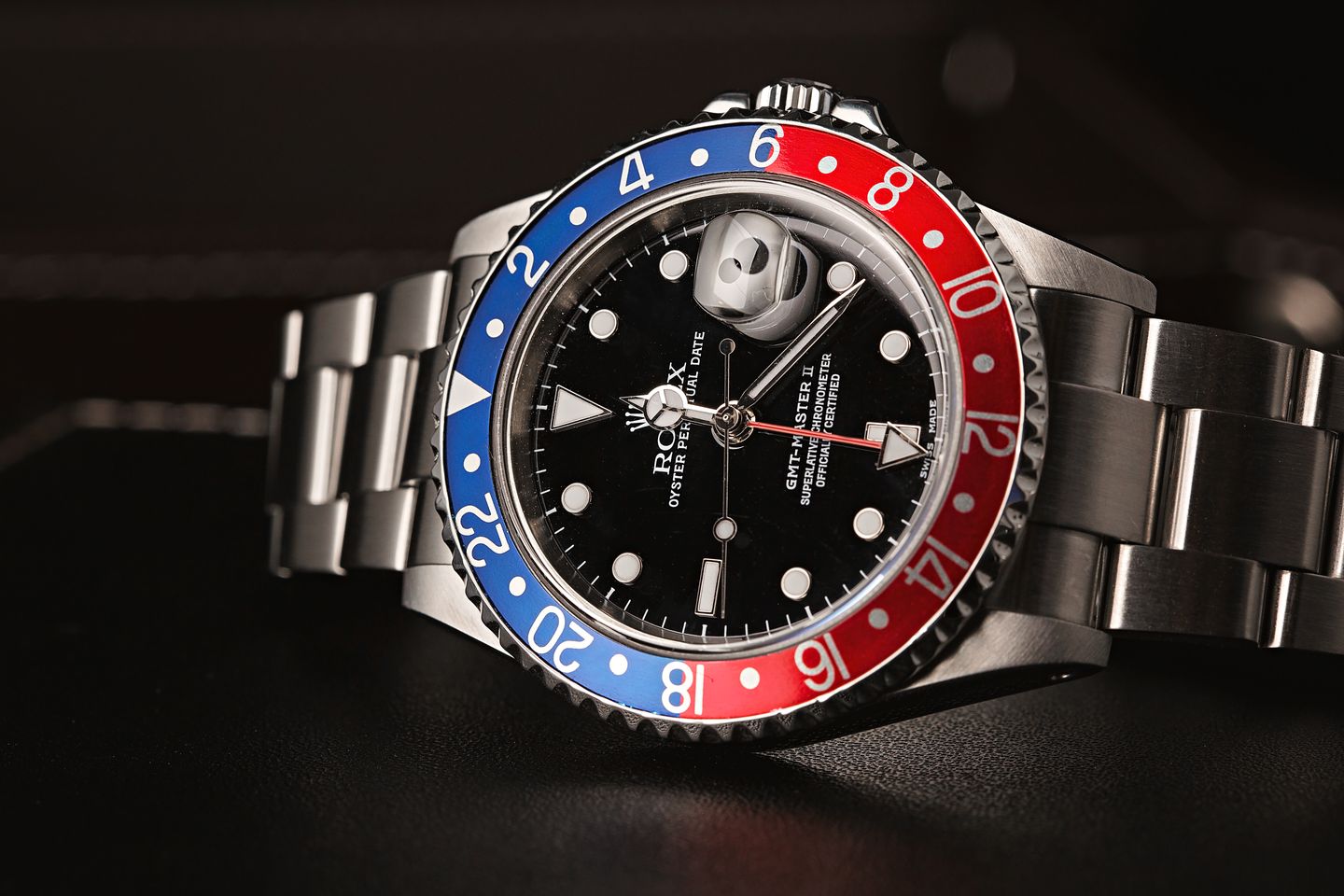Much like an exotic car, a mechanical watch is not only admired for its body, but for the engine that drives it. A look under the hood of a Rolex watch will give you a glimpse at the brand’s ‘Perpetual’ movement – a self-winding caliber entirely designed and manufactured by the watchmaking masters at Rolex.
Join us as we take a closer look at how the Rolex Oyster Perpetual movement works, from the earliest self-winding calibers developed by Rolex during the 1930s to the latest generation of in-house automatic movements that were launched after the turn of the new millennium.
Click here for our Ultimate Buying Guide on Rolex watches.
The Rolex Oyster Perpetual
Rolex introduced the Oyster Perpetual in the mid-1930s, pairing two of its most influential innovations together onto one watch, the waterproof Oyster case and self-winding Perpetual movement. The Oyster case hit the market the decade prior in 1926, marking the very first instance of a waterproof case made specifically for a wristwatch. It was, and still remains, the perfect vessel for Rolex’s lineup of self-winding movements, although it has seen some seriously impressive upgrades over the past century to improve its overall water-resistance. The other component, and the topic of this article, is the Perpetual movement, which has also seen its fair share of improvements over the past several decades.
Certified as a chronometer by the COSC (the institute charged with testing Swiss-made watches for accuracy and precision), the Oyster Perpetual Movement is further scrutinized at Rolex’s own laboratories where the movement is tested for optimal precision, rate stability, self-winding capabilities, and power-reserve, all while housed in an Oyster case to mimic real-world scenarios. The rigorous internal and external testing grants this caliber its mark of “Superlative Chronometer” – a designation that means the movement’s performance exceeds the COSC’s rigorous requirements for chronometer-certification.
How the Rolex Oyster Perpetual Movement Works
The “Perpetual” in a Rolex Perpetual Movement refers to the ability of the watch to run on the energy provided by the motion of the wearer’s wrist rather than manual winding. Invented by Rolex in 1931, the Perpetual rotor drives this ability using a centrally-mounted winding weight that is able to rotate a full 360 degrees. The activity of the wrist causes the rotor to rotate back and forth, thus winding the mainspring that powers the watch. While self-winding watches did exist prior to the invention of the Perpetual movement, automatic watches only exist in their current form today because of the ingenuity of Rolex.
A watch’s precision, on the other hand, is dependent on the consistency of its movement’s oscillator, which is made up of a hairspring and a balance wheel. The more steady the swings of the oscillator the more precisely a watch tells time, so manufacturers always strive for new ways to enhance the components of this mechanism. As a result of five years of R&D, in 2000 Rolex created a superior version of a traditional hairspring, which debuted inside the Rolex Daytona movement caliber 4130, the patented Blue Parachrom hairspring – a spring impervious to magnetic fields and up to ten times more resistant to shocks.
Later in 2005, Rolex introduced the patented Paraflex system, a tiny yet robust shock absorber that improves the shock resistance of a Rolex by up to 50%, enhancing the watch’s protection from everyday knocks. By inventing the Parachrom hairspring, Rolex was no longer reliant on the industry standard Nivarox to supply them with their hairsprings, essentially bringing more of the production of their movements in-house to meet their strict standards for perfection.
A New Generation of Oyster Perpetual Movements
At Baselworld 2015, a number of Rolex watches were inaugurated with a new-generation of movements, the Cal. 32xx generation. With improvements on over 90% of their components, these movements resulted in optimized precision and an increased power reserve of up to approximately 3 days, or 70 hours – about 50% longer than previous movements. Featured in these new calibers is the Rolex patented Chronergy escapement – an advanced version of the traditional Swiss lever escapement found in mechanical watches with a more efficient skeletonized design. According to Rolex, modifications to the escapement’s design structure provide a 15% increase in efficiency making way for more power reserve, plus its construction from nickel-phosphorus makes it resistant to magnetic interference. The first of these movements included the calibers 3255, 3285, and 3255.
Inside the current generation of full-size Rolex Oyster Perpetual watches is the no-date equivalent of those movements, the caliber 3230, which debuted in 2020 and replaced the caliber 3130. The caliber 3235 and caliber 3230 movements are nearly identical, with the biggest difference between them being that one has a date mechanism and the other does not. The powerhouse movement also drives the majority of Rolex’s other time-only masterpieces, including the new Explorer 36, No Date Submariner, and the Air-King.
While the caliber 3230 is tucked inside the 41mm and 36mm editions of the current production Oyster Perpetual, the smaller models rely on the caliber 2232, which is impressive in its own right with an innovative Syloxi Hairspring, the same Paraflex shock absorbers, and a 55-hour power reserve. Like calibers 3235 and 3230, the cal. 2232 is chronometer-rated and promises accuracy up to -2/+2 seconds per day.
Parachrom Blue vs. Syloxi Hairsprings
Early hairsprings produced decades ago were far from meeting the standards of today’s watch industry. They were very susceptible to weather variations and magnetic fields because they were constructed from steel. Eventually, other variations followed, promising better anti-magnetism and resistance to temperature fluctuations. However, the modern hairspring as we know it today is a watchmaking marvel, offering unparalleled resistance to all the outside influences that can affect the watch’s ability to keep perfect time.
One of those hairsprings is the blue Parachrom hairspring, which is made from a proprietary alloy produced by Rolex that is highly resistant to changes in temperature along with being entirely antimagnetic. The Syloxi hairspring is an even newer innovation dreamt up by Rolex, making its debut exclusively in the midsize and women’s collections. It’s constructed from silicon and offers similar resistance to shocks, magnetism, and temperature as the Parachrom hairspring. The most significant difference is how the Syloxi hairspring is attached to the balance bridge. Unlike the Parachrom hairspring, which is attached at a single point, the Syloxi variation is fixed to the balance bridge at two points. This design offers improved isochronism compared to the Parachrom hairspring, and is entirely antimagnetic due to being made from a silicon based material. The caliber 3230 utilizes the Parachrom hairspring, while the lady’s caliber 2232 is equipped with the Syloxi hairspring.
The illustrious history of the Oyster Perpetual Movement is an inspiration for Rolex’s watchmakers to continuously push the boundaries of timekeeping excellence. The spirit of innovation is perpetually beating at the heart of Rolex and we look forward to many more technological breakthroughs from this legendary company.
